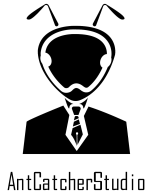文章目錄
讀完就可以獲得新知識
讀完這篇文章,你將學會辨認陌生螞蟻的方法,文章將深入淺出的介紹,搭配極大量圖片,保證讓你一看就懂!
先講重點
相同類型的螞蟻,會有特定的共有特徵,這些特徵被學者整理起來,就成為了可以幫螞蟻分類的"檢索表"。
我們在觀察螞蟻時,透過"檢索表",一步一步的排除其他選項,最終找到正確的分類。
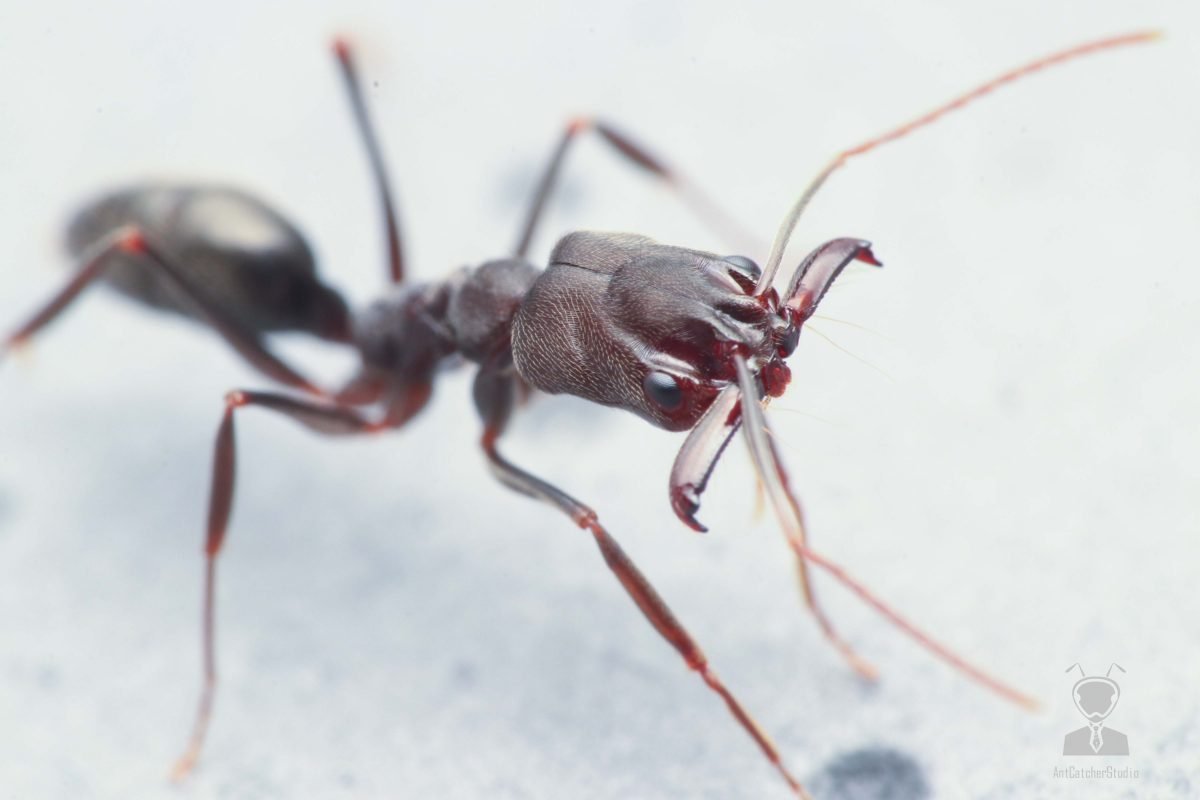
必備知識
螞蟻的分類,共有3個階段,每階段的結果,都會幫助我們縮小可能的蟻種範圍,當然,每個階段都需要出動顯微鏡 ( 或是你火眼晶晶也可以 )
基本的生物分類,由廣泛到精準,分別為: 界>門>綱>目>科>屬>種
螞蟻由於數量太多,”蟻科”已不足區分,因此又劃出了”亞科”分類,例如山蟻亞科、家蟻亞科等。
以常見的甜蜜巨山蟻來分析,他的分類就變為:動物界>節肢動物門>昆蟲綱>膜翅目>蟻科>山蟻亞科>巨山蟻屬>甜蜜巨山蟻。
實地演練
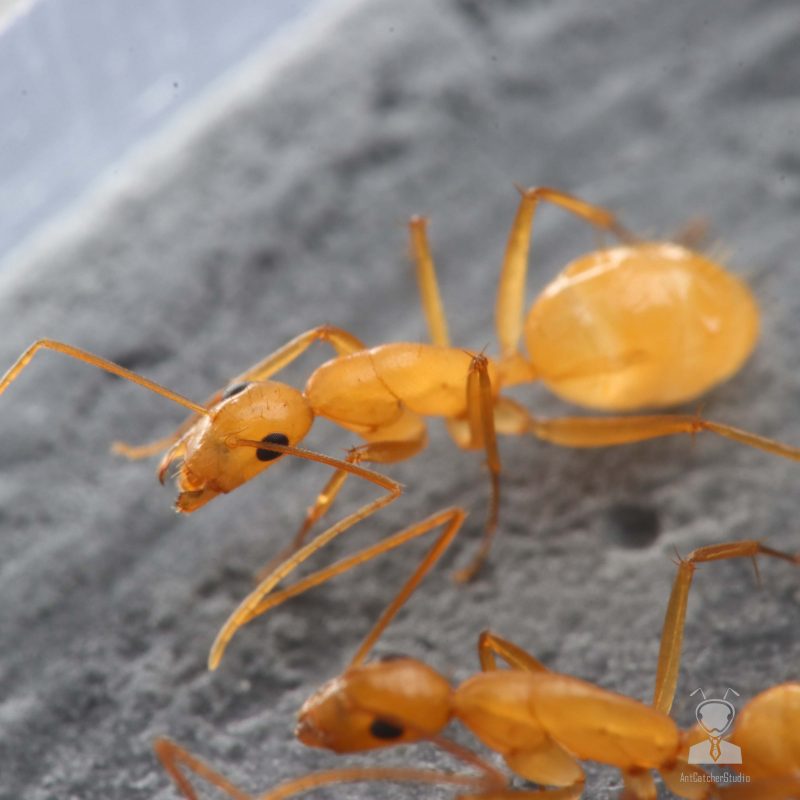
既然我們已經知道手中的昆蟲是螞蟻,那只剩下亞科、屬、種,這三個分類我們未知,而”檢索表“就是幫助我們一步一步找出螞蟻分類的重要工具。
檢索表的使用有點類似心理測驗,都是從第1題(敘述)開始,若符合A描述 則到第2題;符合B描述就到第3題,重複幾次,最後的結果就是分類結果。
這樣講還是很模糊,我們直接以甜蜜巨山蟻為例子,實際跑一趟檢索吧!
亞科的檢索
2. 中軀與腹錘間有一節明顯的腰節 (腹柄節);腹錘第一節與第二節間癒合完全或有一帶狀縊縮 —- 3
– 中軀與腹錘間有二節明顯腰節 (腹柄節與後腹柄節);腰節的形狀與腹錘各節在形態上完全不同 —- 8
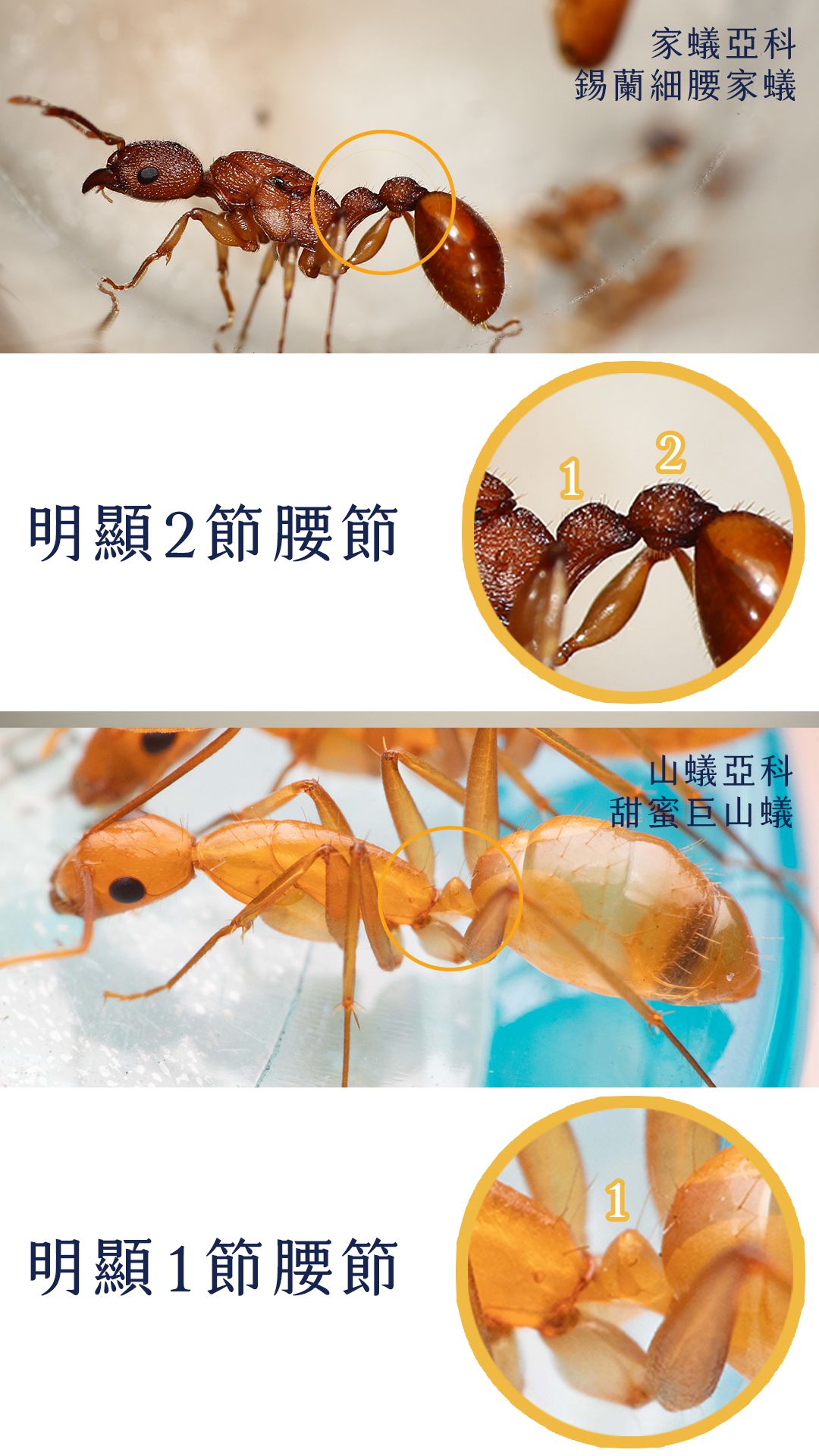
透過比較,我們發現甜蜜只有一個腰節(腹柄節),符合這題第1個描述,因此跳到第3題。
3. 腹錘末端螫針退化 —- 4
– 腹錘末端螫針發達明顯 —- 5
所有符合上一題描述的蟻種都會接續這題,如只有一節腹柄節的針蟻和山蟻

甜蜜符合敘述1,因此跳到第4題
4. 腹柄節為鱗片狀;腹錘末端有一半圓形或圓形的酸腺孔,常呈管狀突出,上著生剛毛 (4a) —- Formicinae 山蟻亞科
– 腹柄節為管狀;腹錘末端無管狀酸腺孔,呈縫狀開口 (4aa) —- Dolichoderinae 琉璃蟻亞科

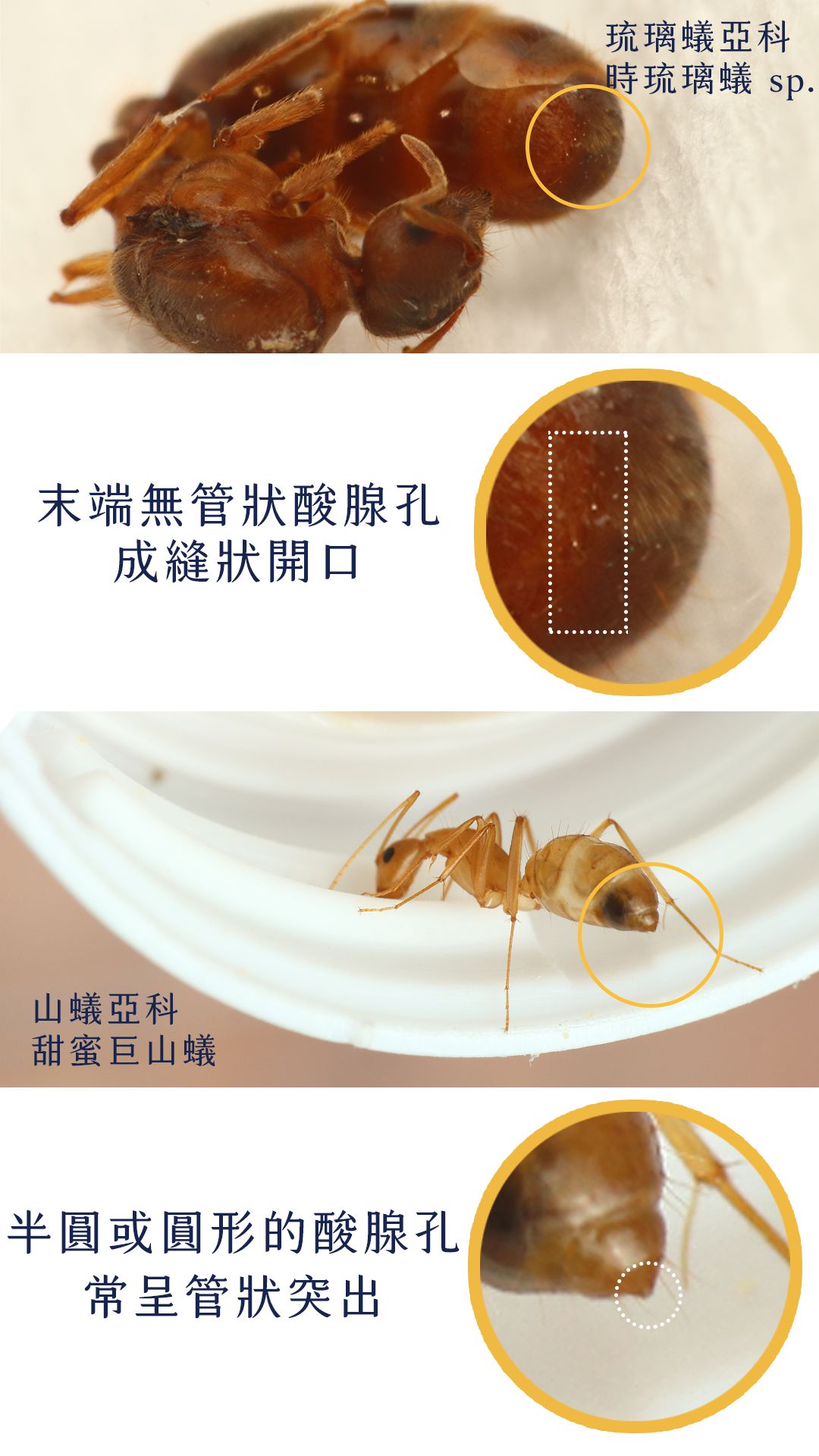
到此為止,我們發現甜蜜符合屁屁有酸腺孔的敘述,因此被確定是Formicinae,我們接著縮小範圍,從山蟻亞科裡所有的特徵再一一區分,直至確認屬。
屬的檢索
剛剛的敘述都是山蟻亞科家族成員的共同特徵,接著要對更細微的變化進行區分。
1. 觸角 9-11 節 —- 2
– 觸角 12 節 —- 5

5. 觸角窩接近頭楯 (cly) 後緣 (5a) —- 6
– 觸角窩遠離頭楯 (cly) 後緣 (5aa) —- 10
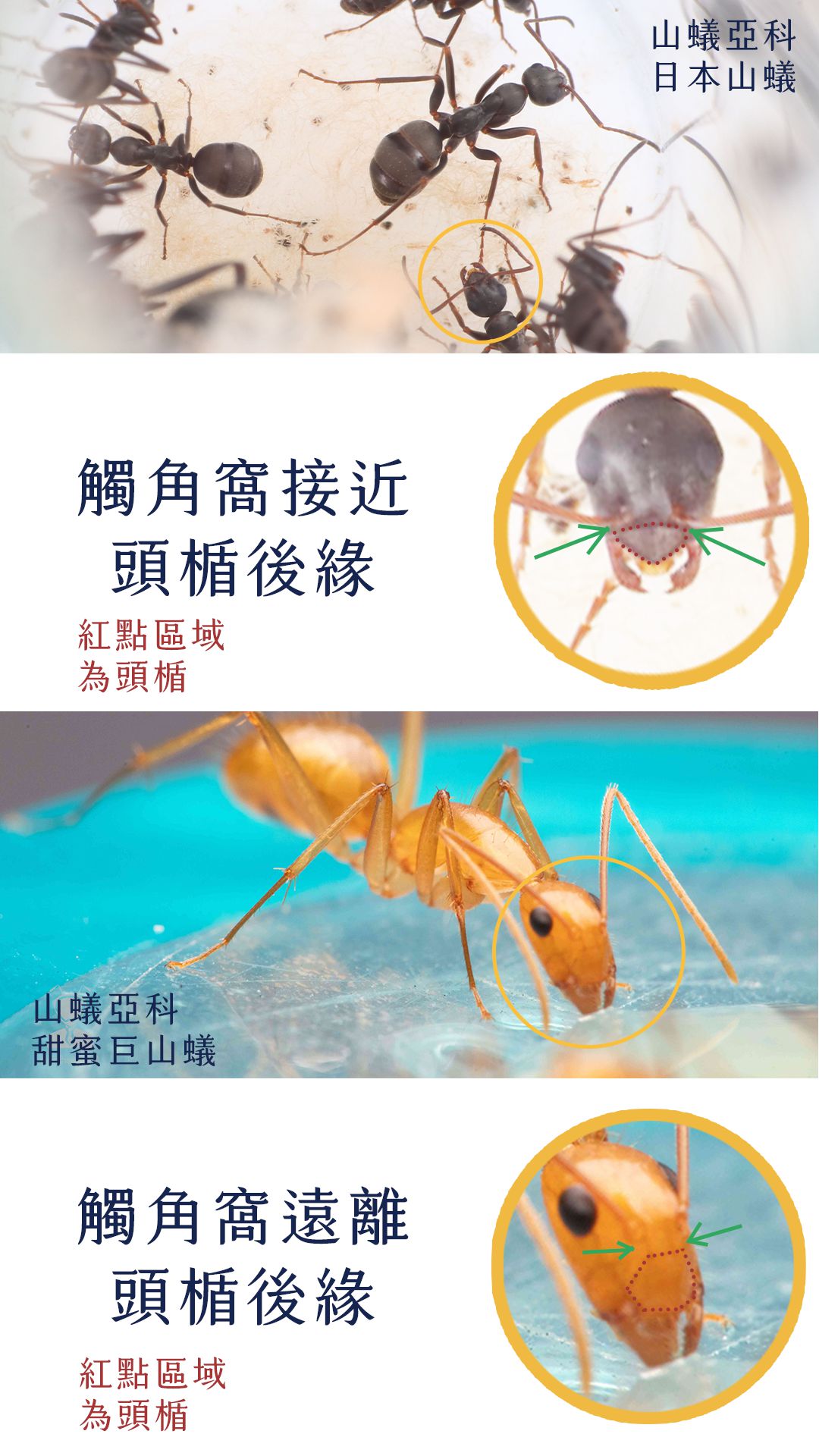
10. 腹錘第一節背板大,由背面觀或側面觀皆超過腹錘的一半;中軀部或腹柄節具刺或齒 —- Polyrhachis 棘山蟻屬
– 腹錘第一節背板小,由背面觀或側面觀無超過腹錘的一半;中軀部或腹柄節無刺或齒 —- 11

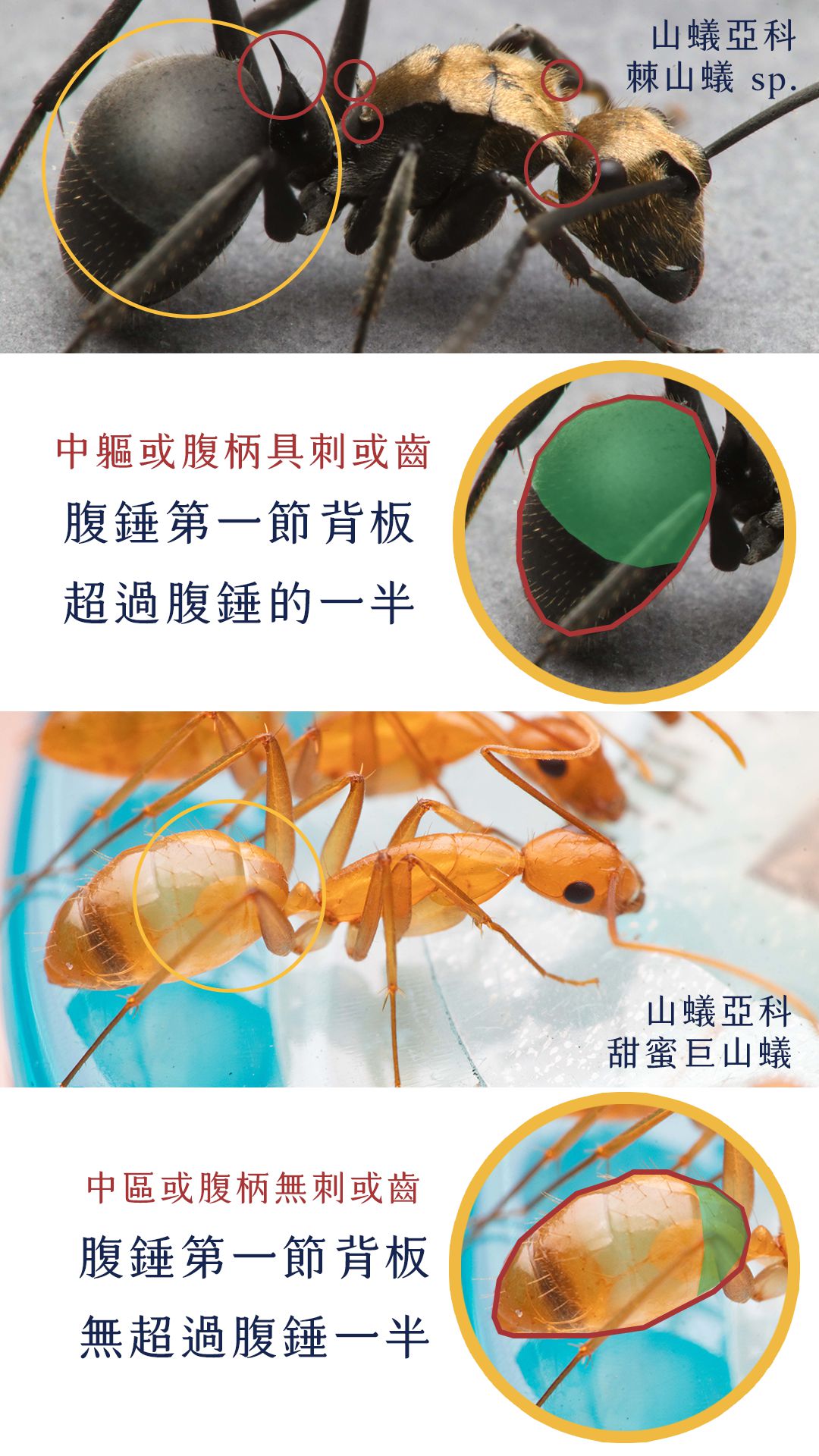
11. 觸角窩位於前額隆線中線中央;工蟻亞階級前足腿節明顯膨大,兵蟻亞階級與雌蟻頭部側 面觀,前緣明顯呈直切扁平狀 —- Colobopsis 塞巨山蟻屬
– 觸角窩位於前額隆線中線前方;工蟻亞階級前足腿節無膨大,兵蟻亞階級與雌蟻頭部側面 觀,前緣無呈直切扁平狀 —– Camponotus 巨山蟻屬

種的檢索
終於,答案是巨山蟻!
辛苦至此,我們終於確定手中這黃黃的螞蟻是”山蟻亞科”、”巨山蟻屬”的螞蟻了,既然知道巨山蟻就好辦,只剩下幾個候選名單而已。
事不宜遲,我們開始吧!
誒等等,可是我們並沒有"種"的檢索表啊(台灣產螞蟻目前無),那要怎麼確定到種呢?
嘿嘿,那只要找到當初文獻所描述的特徵就可以啦!
我來看看,甜蜜巨山蟻的型態描述原文……
奇怪,怎麼找不到?
原來甜蜜巨山蟻是1889年描述的,並在1893年正式發表,這可是一百多年前啊!
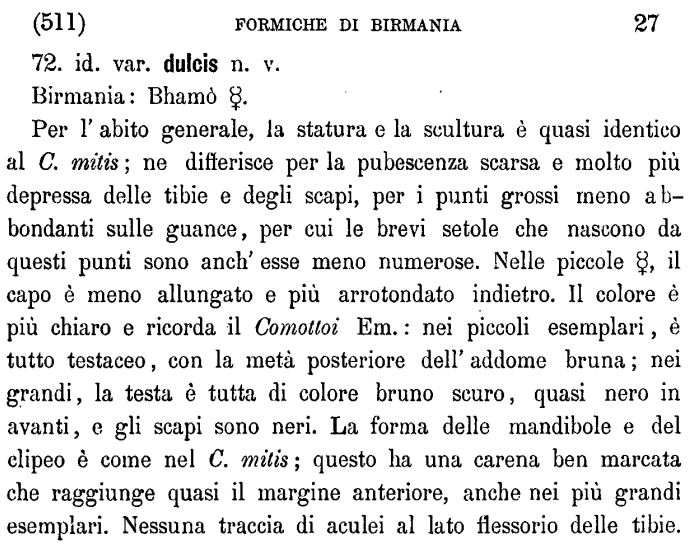


居然是用義大利文描述!
果然螞蟻鑑定,好難呢~
結論
透過這樣帶你跑一次完整的檢索表,我們也能理解到,其實螞蟻鑑定,不是單純用目光掃過;或是看看形狀、顏色就可以完成的,螞蟻分類是一門專業又嚴謹的學問,其實並沒有大家想像的那麼簡單。
鑑定螞蟻順序

這篇文章將清楚說明螞蟻鑑定過程,從亞科至屬級的分類,使用手邊工具即可完成螞蟻鑑定。
共耗時(約) 3 hours
-
先確定亞科
觀察手中螞蟻的腹柄節數量、是否有螫針、複眼發達或退化等特徵,與檢索表進行比對,排除其他選項,最終得出該蟻種”亞科”分類。
-
找出屬級
根據上一步驟結果,翻閱至檢索表內,該亞科的屬級檢索章節,根據手中螞蟻的觸角節數、大顎形狀、顎鬚節數、足部節脛等特徵,與檢索表進行比對,最終得出該蟻種”屬”分類。
-
確認種
根據台灣物種名錄,找出該屬級下所有蟻種,逐一進行特徵比對,以文字描述為主,照片比對為輔,最終找出確切蟻種。
撰文者的心底話
我花費了非常多時間與精力,去學習如何拍攝螞蟻、也花了更多時間在練習,在這篇文章、這個網站上面,幾乎99%的照片都是由我自己拍攝的,從照片到螞蟻圖鑑,只要能夠幫助到熱愛螞蟻的你,讓你看了舒心、看了驚嘆、看了感動,那一切就值得了。
身為螞蟻愛好者(兼寵物螞蟻專賣店老闆),我對螞蟻的熱愛是永無止境的,有許多個失眠的夜晚,是因為讀螞蟻論文太開心而忘了睡覺。
只要看到一張拍攝清楚、畫質好的螞蟻照片,我就會非常開心,但無奈台灣實在是沒多少相關資源。
以我自己為例,我在鑑定一隻陌生蟻種時,可能要花費5~10個小時,其中,很多蟻種是完全沒有清晰照片(有些甚至沒有手繪圖),要不是看不清楚,就是角度不對,這樣的經歷令我非常痛苦。
找不到高清、清晰、好看的螞蟻照片,那乾脆我自己拍!
既然我看到螞蟻照片會如此開心,那想必也有人和我一樣,如此熱愛螞蟻,那我更必須把我的快樂分享給大家,這就是我製作台灣螞蟻圖鑑的初衷。
希望這篇文章能夠幫助到其他公民科學家,並且吸引更多人加入這行列。
這篇文章花了我5個小時構思、2個小時挑選素材、6個小時製圖、2個小時撰寫,5年收集素材,並且耗損了0.59%的腰椎耐久度,如果你喜歡這篇文章,可以留言讓我知道,或是分享給更多人,這對我會是一個非常大的鼓勵。
自助鑑定
想自己試試看鑑定?
這是我製作的網頁檢索表,可以玩看看
( 使用的是2003年資料,稍微過時,但仍有一定的正確性 )
參考資料
- 檢索表原網址 ( 科技部補助研究計畫 )
- 台灣生物誌 台灣螞蟻相 (膜翅目_蟻科)並附亞科屬級檢索表與名錄 (林宗岐等 , 2021)
- Formiche di Birmania e del Tenasserim raccolte da Leonardo Fea (Emery, 1889)
- Catalogus Hymenopterorum hucusque descriptorum systematicus et synonymicus. (Dalla Torre, K. W. von.,1893)
- Hymenoptera. Fam. Formicidae. Subfam. Formicinae ( Emery , 1925 )
- 臺灣螞蟻相(膜翅目:蟻科) – 並附亞科與屬檢索表 ( 林宗岐,2003 )
